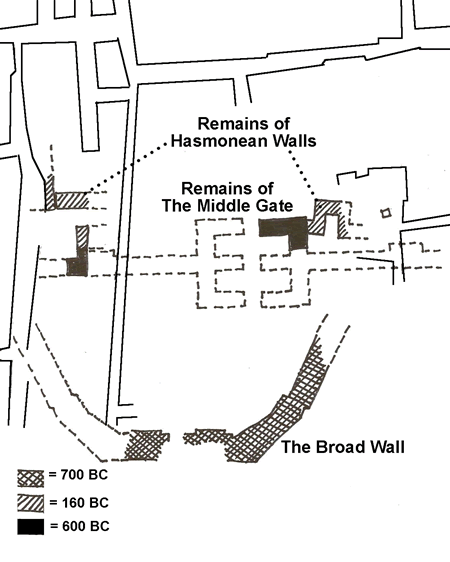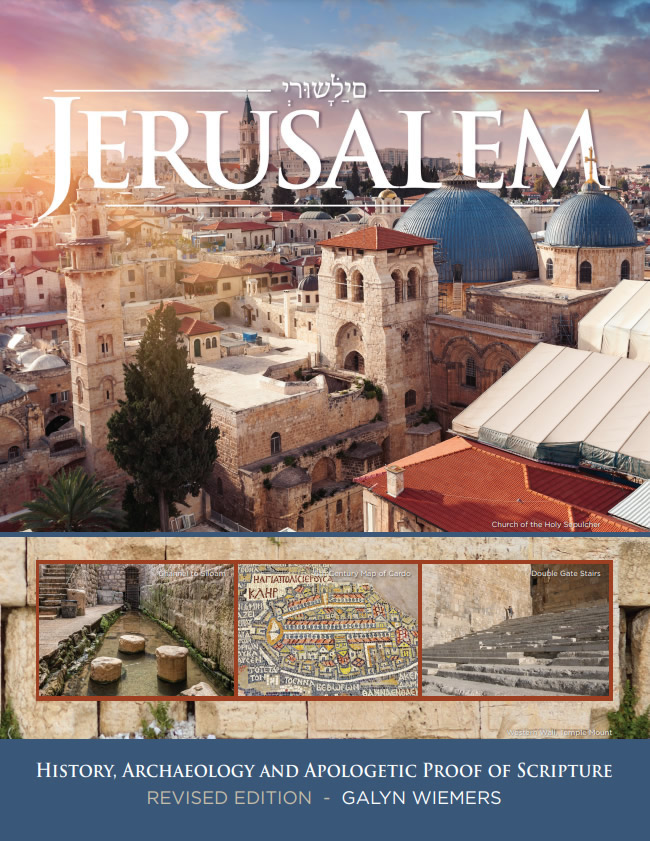28- Hasmonean Walls and Towers |
Maccabees and Hasmoneans: 167- 40 BC, Revolt & Independence Judas Maccabaeus took control of Jerusalem from the Seleucid Empire in 164 BC. He cleansed the temple and began to rebuild the city and its defenses that same year. In 160 BC Demetrius, King of the Seleucid Empire, gave Jonathan Maccabaeus a letter which promoted him, authorized him to raise an army and manufacture weapons, and stated that he was considered an ally of the Seleucid Empire. The letter also ordered the release of the Jewish hostages held by Seleucid troops in the fortress called the Acra, which sat to the south of the south wall of Solomon’s Temple Mount, attached to the Temple Mount wall. The Acra had been used as a stronghold against the Jews during the entire
By 141 BC Simeon Maccabaeus was able to oust the Seleucid military and its supporters who had been
Simeon and Hyrcanus I built the “First Wall” around the southern portion of the city on the western hill, which was called the Upper City. In 134-132 BC the Seleucids attacked Jerusalem but could not penetrate its walls. John Hyrcanus I signed a treaty with the attackers which required the demolition of parts of Jerusalem’s rebuilt fortifications. In return, the siege was lifted and Jerusalem was recognized as an independent kingdom by the Seleucids. Residences were then added in the north, and a “Second Wall” was built to protect the citizens there. |
 This diagram shows the location of Hasmonean wall remains that are found in the line of the old First Wall. This wall line ran from the Tower of Mariamme to the east, including the portion of the wall in the photos below. It reached the Western Wall of the Temple Mount. |
|
|
|
|
|
|
|
 |
UPDATED! 2022 - JERUSALEM: HISTORY, ARCHAEOLOGY AND APOLOGETIC PROOF OF SCRIPTURE - Revised Edition (2022) Open this link (https://generationword.com/Jerusalem-History_Archaeology_Apologetic_Proof_of_Scripture-Revised_Edition-2022.htm)
|
Original 2010 - JERUSALEM: HISTORY, ARCHAEOLOGY AND APOLOGETIC PROOF OF SCRIPTURE Download a FREE online .pdf of "Jerusalem" HERE (click on this book cover to download the 2010 book as a .pdf ) |
|
|
|
|
|